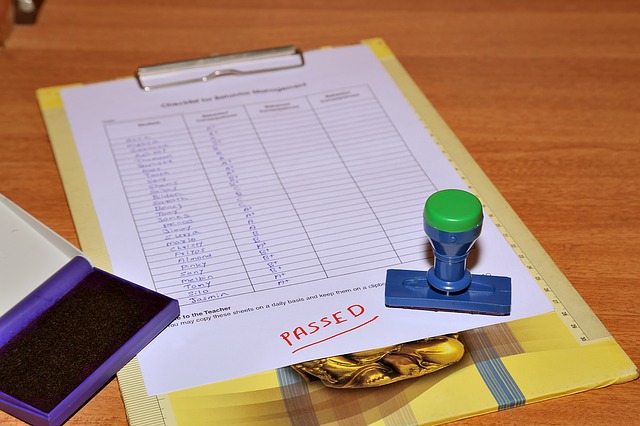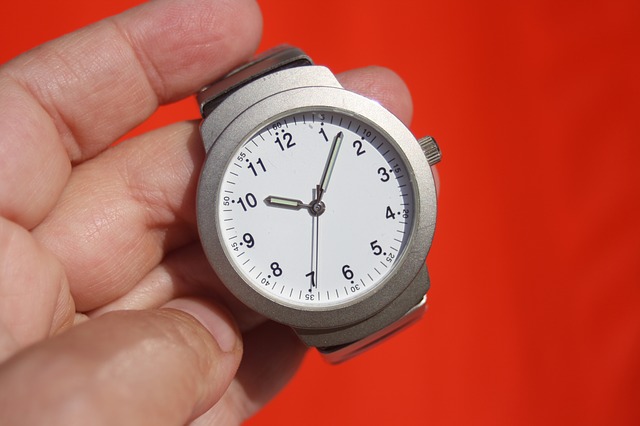
So you’re ready to start studying for the GMAT! Great…but how do you start? The best way to kick off your exam prep is with a GMAT diagnostic test, which will help you see where your score is starting off, how much you need to improve, what kinds of prep resources you’ll need, and how to craft the perfect study plan for yourself.
In this article, I’ll go over where to find the best free GMAT diagnostic test, how to analyze your test results, and tips for customizing an effective study plan just for you.
What Is a GMAT Diagnostic Test? Why Does It Matter?
A GMAT diagnostic test is a practice test you take at the beginning of your prep, usually about three months before your exam date. You can use the results of your diagnostic test to figure out what your weaknesses are and how to address them in your study sessions. You can also use it to get a good idea of your starting point score-wise and to set a realistic target score.
By far the best and most effective GMAT diagnostic test is available on the Official GMATPrep Software, which you can access for free with an account at mba.com. There are two full-length computerized adaptive practice tests on the software that match the visuals, format, and content of the real exam.
The GMATPrep software questions are official, meaning they’re all authored by the Graduate Management Admissions Council (GMAC). They’ll look and feel just like the questions you’ll see on the GMAT, so you can be sure that the results you get on this practice test are reliable in terms of gauging your progress and assessing where you stand as you begin your GMAT prep.
Not sure how or what to study? Confused by how to improve your score in the shortest time possible? We've created the only Online GMAT Prep Program that identifies your strengths and weaknesses, customizes a study plan, coaches you through lessons and quizzes, and adapts your study plan as you improve.
We believe PrepScholar GMAT is the best GMAT prep program available, especially if you find it hard to organize your study schedule and don't want to spend a ton of money on the other companies' one-size-fits-all study plans.

When you take your diagnostic test, mimic the setting and conditions of the real GMAT as closely as possible. Take the optional eight-minute breaks. Don’t use a calculator on practice quant sections, and try to complete the sections straight through, without taking breaks during the sections themselves to use the bathroom, check your phone, or look things up. This will help make your GMAT diagnostic test score as useful as possible in terms of analyzing your starting point.

How to Analyze Your GMAT Diagnostic Test Results: Big Picture
Once you’ve taken your initial GMAT diagnostic test, you’ll need to break down your test results in order to understand exactly what you need to work on. Here are three questions to ask yourself to get you started.
#1: Which Sections Were Your Best? Your Worst?
Ask yourself which sections felt the hardest. Often, test-takers find either the verbal or quant section significantly more difficult. You need to address your own anxieties in order to prepare as much as you can for the exam, and that means focusing your prep time primarily on the sections and question types that worry you the most.
You should also, of course, note if there’s a large gap in your GMAT diagnostic test scores on the two main sections, which will give you a good idea of where to focus your energies during your prep. Generally speaking, MBA admissions committees frown upon large disparities in scores between the verbal and quant GMAT sections.
The integrated reasoning section is confusing and difficult for many test-takers, especially because of its multi-part questions. For more help with integrated reasoning, you can check out our tips on acing the IR section, as well as GMAC’s GMAT IR Prep Tool.
Though you won’t get a score on your practice essay in your initial free GMAT diagnostic test, it’s helpful to note if you found it especially difficult or if you weren’t sure what to write. You can get more assistance with the analytical writing assessment in our GMAT essay guide. If you want your practice essays to be scored to see how you might do on the exam, you can purchase the GMAT Write tool from mba.com.
#2: What Question Types Did You Miss?
When reviewing your answer explanations after your GMAT diagnostic test, you’ll be able to note not only which sections were your stronger or weaker ones, but also which question types you struggled with the most. For example, in the verbal section, there are reading comprehension questions, sentence correction questions, and critical reasoning questions. Was there a disparity in how you performed on each type? Keep track of how many of each question type you got wrong so you’ll know how to customize your drills as you study.
#3: Did You Have Enough Time?
Running out of time before you complete all the questions in a section on your diagnostic test can be a helpful indicator of what you need to work on. As you review the sections on which you ran out of time, ask yourself why you took too long. Were you taking too long reading or contemplating each question? Did you not understand what certain questions were asking? Were you simply struggling with the questions’ content? Is there a language barrier, or are you taking too long completing calculations on quant sections? The answers to these questions will help you use your GMAT diagnostic test to move forward with an effective study plan.

How to Analyze Your GMAT Diagnostic Test Results: The Nitty-Gritty
Once you know what you got wrong on your diagnostic test, you’ll need to understand why in order to tailor your study plan to your unique needs. Everyone has a different set of error patterns, and it’s important to figure out yours in order to target them effectively. Let’s go through the most common reasons that test-takers get certain questions wrong.
#1: Are There Gaps in Your Content Knowledge?
If you have particular trouble with either the quant or verbal section, you might need a brush-up on fundamental math or grammar skills. As you read the answer explanations for the questions you got wrong, take notes on how each one is labeled and where you tend to go wrong. For example, sentence correction questions might be labeled as an “idiom” or “verb tense” question. If you tend to make mistakes on a particular error type, brush up on your skills in that area so you learn how to recognize those errors more quickly.
Also, you won’t have a calculator on the quant section. If you struggle with doing arithmetic or rounding in your head, or if calculations wasted a lot of your time during your diagnostic test, that’s a skill you’ll definitely need to practice. You can do this during your regular study sessions, of course, but you can also practice estimating calculations in your head in your everyday life, such as when you calculate change at a store or tips at restaurants, until it becomes second nature.
#2: Did You Panic?
Sometimes anxiety can cause you to rush through a question and make careless mistakes or forget the point of what it’s asking you.
The best way to ease your anxiety about the test is, of course, to practice and familiarize yourself with the content and format enough that you know exactly what to expect. Another way to address this common problem is to take notes as you read a question. This will help stop you from forgetting important details, which many students tend to do if they’re prone to testing anxiety.
#3: Did You Fully Read and Understand Every Question?
It might seem obvious, but it’s a common issue: you need to read every passage, question, and answer choice fully. You might feel like you’re saving time, for example, by not reading through reading comprehension passages fully, but the saved time won’t make a difference if you’re missing important details that will help you quickly eliminate incorrect answer choices.
#4: Making Faulty Assumptions
Sometimes, you might be answering GMAT questions incorrectly because you’re making unfounded assumptions about either the question or the answer choices. Don’t assume that figures in the quant and integrated reasoning sections are drawn to scale, for example, unless you’re directly told.
This problem is especially common in critical reasoning questions, particularly when you’re being asked to make inferences (come to conclusions based on reasoning and evidence) based on the arguments provided. Remember that you aren’t being asked to speculate: any evidence you need to come to a particular conclusion will be provided in the exam passage.
Want to improve your GMAT score by 60 points?
We have the industry's leading GMAT prep program. Built by Harvard, MIT, Stanford, and Wharton alumni and GMAT 99th percentile scorers, the program learns your strengths and weaknesses and customizes a curriculum so you get the most effective prep possible.


6 Tips for Making an Effective GMAT Study Plan
Based on your GMAT diagnostic test score, what are you struggling with? Once you know, craft a GMAT study plan that’s tailored to your unique needs. Let’s go through six of the best ways to create an effective study plan for yourself.
#1: Set a Target GMAT Score
Once you have your score from your first GMAT diagnostic test, it’s time to set a target GMAT score for yourself. It’s important to set a target score because it will allow you to plan your GMAT prep and give you more information about how much and how quickly you’ll need to improve.
To set a target score, first, make a list of business schools to which you plan to apply. Next, find the average GMAT scores of the most recent incoming classes of your prospective business schools (usually available in each school’s class profile). Find the highest GMAT score in the list. How far off is your initial score from your diagnostic GMAT? How much do you need to improve? How long will you need to study to reach your target score, and what benchmarks can you set along the way? Answering these questions for yourself will help you prepare more effectively for the GMAT and to tailor your prep as you study for the exam.
You can find a more detailed step-by-step guide to setting a target GMAT score here.
#2: Focus on Your Weaknesses
You don’t, of course, want to waste time during your GMAT prep. That means you’ll need to focus your efforts primarily on the sections and question types you struggle with, rather than distributing your time equally across the board.
By focusing your energy on your weaknesses, you’ll get the most out of every minute of study time. When you customize practice quizzes, for example, focus more on the question types you tend to get wrong than on the ones you already feel comfortable with.
#3: Work on Your Pacing
Many students struggle with timing on the GMAT. To work on your timing, complete pacing drills during your study sessions. For example, each sentence correction question should take about a minute to complete. In one drill, try to answer ten sentence correction questions in twenty minutes. In the next session, try to beat your last time until you reach your timing goal of ten questions (answered correctly, of course) in ten minutes.
#4: Analyze Real Questions
If you tend to get confused about what GMAT questions are asking you to do, take the time to analyze questions that you didn’t understand during each practice session. Take as much time as you need to slowly read through the question and answer explanation, figuring out exactly where you got lost when you initially read it. Do this with at least a few questions that confused you after each drill or practice test until you get the hang of how the GMAT sets up its questions.
If you tend to get lost while answering questions, it’s also a good idea to take notes as you go. Experiment with different kinds of note-taking: does jotting down details you think might be important as you read a reading comprehension passage, for example, help you when you get to the questions? As you read critical reasoning questions, take a few quick notes on the primary weaknesses or gaps in logic that you see in an argument, and see if it helps you answer them more accurately.
#5: Drill Gaps in Your Skill Set
Once you know what skill sets you’re lacking, you should focus on bridging those gaps in your GMAT prep. If you’re struggling with reading comprehension questions, for example, read articles in publications like The New York Times and The Economist and practice summarizing and analyzing them for yourself. If you’re having trouble with quant questions, try to figure out what specific math skills you need to focus on (geometry or trigonometry, for example) and focus on brushing up in those areas, using our guide to GMAT math skills (coming soon).
#6: Track Your Errors
It can be easy to get lost in practice questions and lose track of what you’re getting wrong and why. To avoid this, keep a notebook of your study sessions. Record what drills you completed, what questions you answered, what you got wrong, and why (for example, label each incorrect answer with “pacing,” “didn’t read question,” “calculation error,” etc.). This may seem time-consuming at first, but tracking your error patterns is an efficient, effective way to get to the root of your GMAT mistakes and avoid them in the future. Remember, you don’t just have to know the test inside and out: you also need to know yourself and your own testing tendencies inside and out.

Want to Identify YOUR GMAT Strengths and Weaknesses?
Our proprietary GMAT Diagnostic Assessment creates a customized study plan for you that takes you from registration all the way to test day! It is included with every account and proven to significantly maximize your score.
Get your personalized assessment as part of your 5 day risk-free trial now:

What’s Next?
To kick off your GMAT prep, check out our guide to the most important first steps to take as you begin to study for the exam.
Unsure of how to most effectively schedule your GMAT prep? Our expert tips on creating a GMAT study timeline will help lead the way.
Ready to start studying, but need to find high-quality practice questions? Find the best GMAT prep resources here.
 PrepScholar GMAT
PrepScholar GMAT